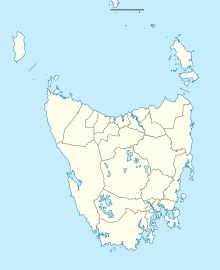Museum of Old and New Art

James Turrell's Amarna at Mona Tasmania sunset 2015
|
|
| Former name | Moorilla Museum of Antiquities |
|---|---|
| Established | 2011 |
| Location | Hobart, Tasmania |
| Coordinates | 42°48′46″S 147°15′40″E / 42.81278°S 147.26111°ECoordinates: 42°48′46″S 147°15′40″E / 42.81278°S 147.26111°E |
| Type | |
| Key holdings | |
| Collection size | 400 |
| Visitors | 210,300 (2012) |
| Curator | Nicole Durling Olivier Varenne Jarrod Rawlins |
| Architect | Fender Katsalidis Architects |
| Owner | David Walsh |
| Public transit access | |
| Nearest car park | On site |
| Website | www |
The Museum of Old and New Art (MONA) is an art museum located within the Moorilla winery on the Berriedale peninsula in Hobart, Tasmania, Australia. It is the largest privately funded museum in Australia. The museum presents antiquities, modern and contemporary art from the David Walsh collection. Walsh has described the museum as a "subversive adult Disneyland."
MONA was officially opened on 21 January 2011. Along with its frequently updated indoor collection, MONA also hosts the annual MOFO and Dark Mofo festivals which showcase large-scale public art and live performances.
The precursor to MONA, the Moorilla Museum of Antiquities, was founded in 2001 by Tasmanian millionaire, David Walsh. It closed in 2007 to undergo $75 million renovations. The new museum was officially opened on 21 January 2011, coinciding with the third MOFO festival. The afternoon opening party was attended by 1,350 invited guests. 2,500 members of the public were selected by random ballot for the evening event which included performances by The DC3, True Live, The Scientists of Modern Music, Wire, Health and The Cruel Sea.
The single-story MONA building appears at street level to be dominated by its surroundings, but its interior possesses a spiral staircase that leads down to three larger levels of labyrinthine display spaces built into the side of the cliffs around Berriedale peninsula. The decision to build it largely underground was taken, according to Walsh, to preserve the heritage setting of the two Roy Grounds houses on the property. Walsh has also said that he wanted a building that "could sneak up on visitors rather than broadcast its presence ... 'a sense of danger' that would enliven the experience of viewing art". Most visitors approach by ferry up the River Derwent.
...
Wikipedia

